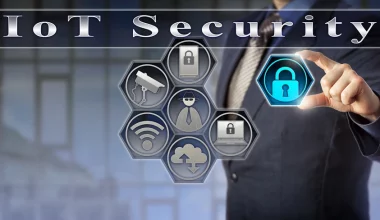In today’s digital landscape, where communication is largely conducted through email, ensuring the security and integrity of corporate communications has become paramount. Cybercriminals are continually devising sophisticated techniques to exploit vulnerabilities and compromise sensitive information. One effective way to bolster corporate security is through the implementation of email authentication protocols. This article will discuss the idea of email authentication, its importance to corporate security, various authentication techniques, and best practices for its implementation.
Introduction
This article will discuss the idea of Email-auth, its importance to corporate security, various authentication techniques, and best practices for its implementation. When it comes to company security, email authentication is essential for preserving confidential information, preserving brand reputation, and reducing the risks brought on by online attacks. The term “email authentication” refers to a group of procedures and methods used to confirm the legitimacy and accuracy of emails, making sure they come from reliable sources and weren’t altered while being transmitted.
What is Email Authentication?

Email authentication is a way of confirming the sender’s identity and ensuring that the email message was unchanged in its route. It involves the use of various cryptographic techniques and protocols to establish trust between the sender and recipient domains. By implementing email authentication, organizations can reduce the likelihood of email spoofing, phishing attacks, and unauthorized email usage.
The Importance of Email Authentication for Corporate Security
Email authentication is of paramount importance for corporate security due to the following reasons:
1. Preventing Email Spoofing and Phishing Attacks
Email spoofing is a malicious practice where attackers forge the “From” address to make it appear as if the email originates from a legitimate source. Phishing attacks leverage email spoofing to deceive recipients into revealing sensitive information or performing malicious actions. Email authentication protocols, such as SPF, DKIM, and DMARC, help combat these attacks by verifying the authenticity of the sender’s domain and detecting spoofed emails.
2. Protecting Brand Reputation
Organizations frequently use email to interact with their stakeholders, partners, and clients. Without email authentication, hackers can send fake emails using a company’s domain impersonation, damaging its image and eroding consumer trust. By implementing email authentication protocols, businesses can assure recipients that the emails they receive are genuine, strengthening brand integrity.
3. Avoiding Email Deliverability Issues
Email deliverability is crucial for effective communication. If emails are flagged as spam or blocked by recipient servers due to suspicions of spoofing or unauthorized usage, organizations may face significant challenges in ensuring their messages reach the intended recipients. Email authentication helps improve deliverability rates by providing authentication mechanisms that recipient servers can use to verify the legitimacy of incoming emails. By passing authentication checks, emails are more likely to be delivered successfully, enhancing communication efficiency.
4. Ensuring Data Privacy and Confidentiality
Business emails frequently include delicate material like financial details, protected works of art, or personally identifiable information. Email authentication protocols add a layer of security by verifying the integrity of email content and attachments. This helps prevent unauthorized modification or tampering during transmission, ensuring the confidentiality and privacy of sensitive information.
Types of Email Authentication Methods
To achieve robust email authentication, organizations can implement the following methods:
SPF (Sender Policy Framework)
SPF is an email authentication method that verifies the sender server’s identity by comparing its IP address to a DNS list of approved IPs. SPF allows domain owners to specify which servers are allowed to send emails on their behalf, preventing unauthorized sources from sending spoofed emails.
DKIM (Domain Keys Identified Mail)
Email message validity and reliability are checked using public-key cryptography by DKIM. It involves adding a digital signature to outgoing emails, which can be verified by the recipient’s server using the corresponding public key published in the DNS. DKIM ensures that the email content has not been modified in transit and provides a level of trust in the sender’s identity.
DMARC (Domain-based Message Authentication, Reporting, and Conformance)
DMARC builds upon SPF and DKIM by providing a policy framework for email authentication. It allows domain owners to specify how recipient servers should handle emails that fail SPF or DKIM checks. DMARC also enables domain owners to receive reports on email authentication results, aiding in monitoring and identifying potential spoofing attempts.
How Email Authentication Enhances Corporate Security
Implementing email authentication protocols offers several benefits that enhance corporate security:
Preventing Email Spoofing and Phishing Attacks
Cybercriminals frequently use phishing and email spoofing to trick their victims and obtain critical information. By implementing email authentication, organizations can significantly reduce the effectiveness of these attacks. SPF, DKIM, and DMARC work in tandem to verify the authenticity of email sources, detect spoofed emails, and prevent phishing attempts.
Protecting Brand Reputation
A strong brand reputation is invaluable for businesses. Email authentication helps safeguard brand integrity by preventing unauthorized individuals or entities from impersonating the organization’s domain. By establishing trust in email communications, organizations can maintain a positive reputation and preserve the trust of their customers and partners.
Avoiding Email Deliverability Issues
Emails that fail authentication checks are more likely to be flagged as spam or rejected by recipient servers. By implementing email authentication protocols, organizations can improve email deliverability rates and ensure that their messages reach the intended recipients’ inboxes. This promotes efficient communication and reduces the risk of important emails being lost or overlooked.
Ensuring Data Privacy and Confidentiality
Email authentication protocols add an extra layer of protection to sensitive information communicated via email. By verifying the integrity of email content and attachments, organizations can ensure that confidential data remains secure during transmission. This reduces the risk of unauthorized access or tampering, safeguarding the privacy and confidentiality of corporate information.
Implementing Email Authentication for Corporate Security
To enhance corporate security through email authentication, organizations can follow these steps:
Step 1: Understanding the Current Email Infrastructure
Before implementing email authentication, it’s essential to assess the organization’s current email infrastructure. This includes identifying the email servers, domains, and any existing authentication mechanisms in place. Understanding the infrastructure helps in planning and executing the authentication implementation smoothly.
Step 2: Configuring SPF Records
SPF records are configured in the DNS settings of the domain. The SPF record specifies which IP addresses or servers are authorized to send emails on behalf of the domain. By correctly configuring the SPF record, organizations can prevent unauthorized sources from sending spoofed emails using their domain.
Step 3: Implementing DKIM Signing
To implement DKIM, organizations generate a pair of cryptographic keys: a private key for signing outgoing emails and a public key for verification. On the email server, the private key is safely kept, and the matching public key is made available in the DNS. The private key signs emails on the server and the public key verifies the signature on the recipient’s server. Implementing DKIM assures that the email content has not been tampered with.
Step 4: Enforcing DMARC Policies
DMARC provides a policy framework for email authentication. Organizations can specify the action that recipient servers should take when an email fails SPF or DKIM checks. The policies can range from monitoring the authentication results to rejecting or quarantining emails that fail authentication. By enforcing DMARC policies, organizations can have greater control over the handling of incoming emails and mitigate the risks associated with spoofing and unauthorized usage.
Best Practices for Email Authentication
To ensure effective email authentication and maximize corporate security, organizations should follow these best practices:
Regular Monitoring and Reporting
Implementing email authentication is an ongoing process. It is crucial to regularly monitor authentication results and analyze reports provided by DMARC. Monitoring helps identify any anomalies or potential security threats, allowing organizations to take appropriate actions promptly.
Updating and Managing Authentication Policies
As technology and security landscapes evolve, it is essential to keep email authentication policies up to date. Regularly review and update SPF, DKIM, and DMARC configurations to ensure they align with industry best practices and address emerging threats.
Educating Employees and Stakeholders
Human error can undermine even the most robust security measures. Employees and stakeholders must be informed about email authentication, the dangers of sending unauthorized emails, and how to recognize and report suspicious emails. Training programs and awareness campaigns can help create a security-conscious culture within the organization.
Collaborating with Third-Party Providers
If an organization relies on third-party email service providers, it is crucial to collaborate and ensure they have implemented appropriate email authentication measures. Verify that the providers support SPF, DKIM, and DMARC, and work together to align authentication configurations and policies.
Challenges and Considerations
While implementing email authentication is crucial for corporate security, organizations may encounter some challenges and considerations:
Legacy Systems and Compatibility Issues
Legacy email systems or applications may not support modern authentication protocols. Organizations should assess their infrastructure and consider upgrading or finding alternative solutions to ensure compatibility and effective email authentication.
Email Forwarding and Third-Party Services
Email forwarding and third-party services can complicate the authentication process. It is important to consider how authentication mechanisms interact with these services and ensure that emails remain authenticated throughout the forwarding process.
Managing Multiple Domains and Subdomains
Organizations with multiple domains or subdomains need to implement email authentication consistently across all of them. This requires careful management and coordination to ensure that all domains are protected against spoofing and unauthorized usage.
Balancing Security and User Experience
Striking a balance between strong email authentication measures and a seamless user experience can be challenging. Organizations should implement authentication protocols that enhance security without causing undue inconvenience or delays in email delivery.
Conclusion
Email authentication plays a crucial role in bolstering corporate security by verifying the authenticity and integrity of emails. By implementing SPF, DKIM, and DMARC, organizations can prevent email spoofing, phishing attacks, and unauthorized email usage. This, in turn, protects brand reputation, ensures data privacy and confidentiality, and improves email deliverability. However, organizations should be mindful of challenges such as legacy systems, email forwarding, and the need to manage multiple domains. By following best practices, organizations can maximize the effectiveness of email authentication and create a more secure email communication environment.







